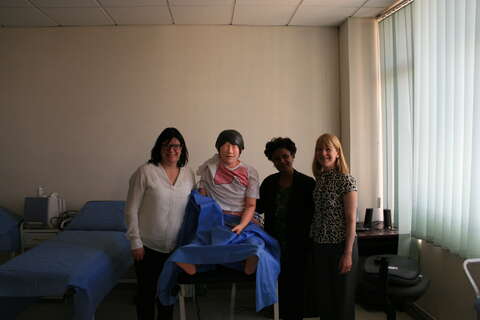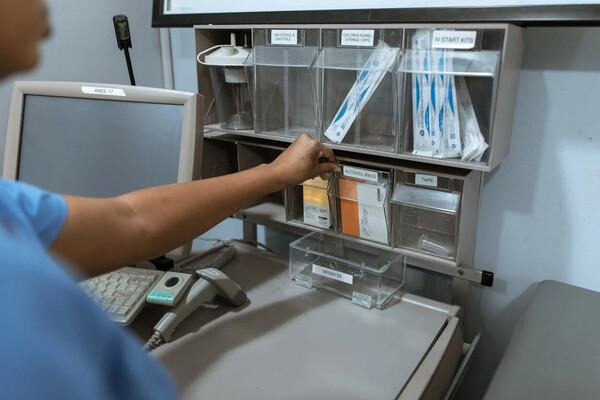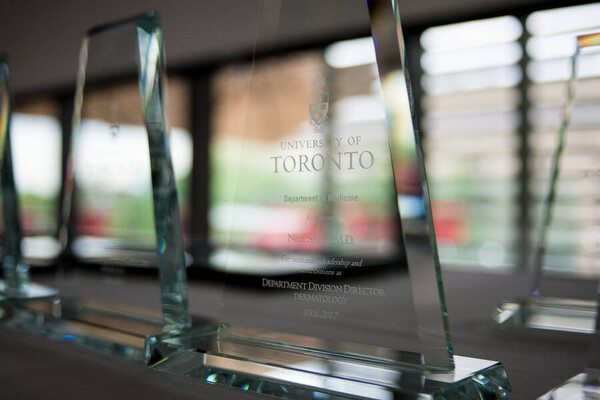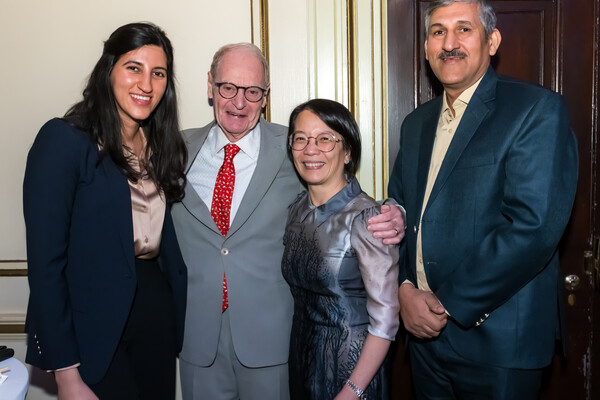Main Second Level Navigation
- Welcome
- Why Toronto?
- History of the Department
- Vision & Strategic Priorities
- Our Leadership
- Our Support Staff
- Location & Contact
- Departmental Committees
- Department of Medicine Prizes & Awards
- Department of Medicine Resident Awards
- Department of Medicine: Self-Study Report (2013 - 2018)
- Department of Medicine: Self-Study Report (2018 - 2023)
- Communication Resources
- News
- Events
TAAAC - Toronto Addis Ababa Academic Collaboration

Gena Piliotis
A shortage of medical specialists in Ethiopia is one of the country’s most pressing concerns. In a country with a staggering population of 91 million, there are less than five physicians per 100,000 people. Most physicians and specialists are concentrated in the country’s capital, Addis Ababa, yet 80 per cent of the population lives in rural areas. Many Ethiopian patients travel extremely long distances—sometimes for days—to receive necessary, and often lifesaving, healthcare.
The Toronto Addis Ababa Academic Collaboration (TAAAC) is a global partnership between the Department of Medicine of the University of Addis Ababa Ethiopia (AAU), and the University of Toronto, established to foster the development of Ethiopian higher education, specifically subspecialty medical training and clinical research, with the aim of building capacity and sustainability in the AAU Department of Medicine.
The U of T Department of Medicine first became involved in TAAAC in 2008 when the Ethiopian Ministry of Education called upon Addis Ababa University and its affiliates to create partnerships with international institutions to expand the capacities of the higher education system in Ethiopia.
The Ministry recognized the need to build local capacity in Ethiopia at all levels and avoid the inevitable “brain drain” of training Ethiopians abroad. There had been local models of inter-university partnerships in higher education that had already been greatly successful, the partnership between the Departments of Psychiatry from AAU and U of T — which started enrolling the first locally trained psychiatrists in 2004 – stood out the most.
As a result of the Ministry’s initial conference, the partnership between AAU and U of T expanded exponentially to include Emergency Medicine, Family Medicine, Anaesthesia, Pharmacy, Radiology, Anaesthesia, Nursing, Critical Care, Neurosurgery and our Department of Medicine. We launched our first three collaborative subspecialty training programs in Endocrine, Gastroenterology and Hematology in 2012, and we have also been collaborating with the Department of Community and Family Medicine in the year one entry Emergency Medicine Training Program.
The model is simple but effective:
- Our two university departments collaborate on curriculum
- Our AAU partners manage the local university red tape and recruit trainees from across the country
- U of T provides blocks of concentrated teaching where typically two teaching faculty and one senior trainee travel to Addis Ababa for four weeks to deliver lectures and most importantly clinical teaching and supervision
- Both partners collaborate on final qualifying examinations for the graduates
Why does the collaboration work?
The truly collaborative nature of the relationship
These are AAU medical training programs – led by a fully trained local clinician who ensures our team integrates into the academic environment – that we support. The training would not be possible without the partnerships because the number of specialists in the country has been historically so limited.
Our teams are incredibly dedicated.

We have now been in Addis for seven years, there have been 15 full teaching trips, 30 faculty and 12 senior residents that have been out for four week blocks and we have also hosted several senior AAU trainees in Toronto for specialized teaching blocks.
We have now graduated 12 subspecialists – the first in their fields to be trained locally in Ethiopia –all of which have stayed in the country and continue to maintain an academic appointment. The Emergency Medicine program has also graduated 15 specialists with equally impressive retention rates. In addition, one of our graduates is the current AAU Head of Internal Medicine, one the Vice-Dean of Undergraduate Medicine, and one the Vice-Chair of Postgraduate Training Programs.
Faculty Comments
“So the actual content knowledge in my mind was not the thing from which they benefited the most. It was helping them to organize how they put the information from the page into a clinical context – that’s where they benefited the most. And they had an enormous thirst for that.”
“We realized, and knew going there, that disease and suffering are just part and parcel of being alive on this planet. It takes an effort to keep (disease) at bay. I am very proud to be part of that effort regardless. So just getting a glimpse of what life is like without that – it was like renewing my vows.”
“I have to say I think it – well it definitely humbled me. I think I saw some very fascinating pathology that taught me quite a bit.”
Senior Resident Comments
“I am very thankful to TAAAC and the staff at Black Lion Hospital for providing me with this once in a lifetime experience. Having an opportunity to practice medicine in a resource poor country is a rewarding and humbling experience. I now understand that the physicians and healthcare teams in Ethiopia are looking for a hand up, not a hand out, and benefit most when they are the driving force in remodeling their healthcare system. I would definitely recommend this experience to future hematology fellows.”
“I certainly learned a lot about endocrinology, especially given that I could see the pathological presentations that in North America we only read about. I also had a lot of ‘captive audience’ time with Drs. Lowe and Becker that allowed me to ask more questions and observe more closely than I would have been able to at home. Perhaps more important, however, is that I learned a lot about how medicine is practiced in developing countries. Though I had a lot of experience in travel and even anthropological research in the developing world, I had never really experienced first-hand the medical system. Similarly, I learned a lot about medical education in this context. For me, this is just a first step in a career that involves global health.”
What does the future hold? As many of the AAU graduates of our current subspecialty collaborations now hold academic staff positions across the country, the ongoing strength of our current program is vital in building capacity across the country. We would also like to embark upon new subspecialty collaborations with nephrology and renal transplant, cardiology, infectious disease and rheumatology. The relationship of our two universities has also lead to new and exciting non-clinical collaborations such as a Master’s of Education program, as well as a “Train the Trainer” faculty development series that many of our graduates have already benefitted from. Lastly, we have only scratched the surface with respect to potential collaborations in clinical and epidemiologic research and education scholarship. Over the past several years many other departments in the U of T Faculty of Medicine have been building their clinical training collaborations, and many new departments have joined the TAAAC family. This has made TAAAC the most integrated and robust educational collaboration between a Western university and one in the developing world known to date!



